If you're like most DIYers, you're probably familiar with a handful of drywall textures. But, there is a wide range of drywall texture types, from the deceptively simple to shockingly complex. Whether you're thinking about incorporating a new texture into your home, or simply want to identify that unusual pattern on your ceilings, this is the list for you!
Drywall Texture Types You Need to Know
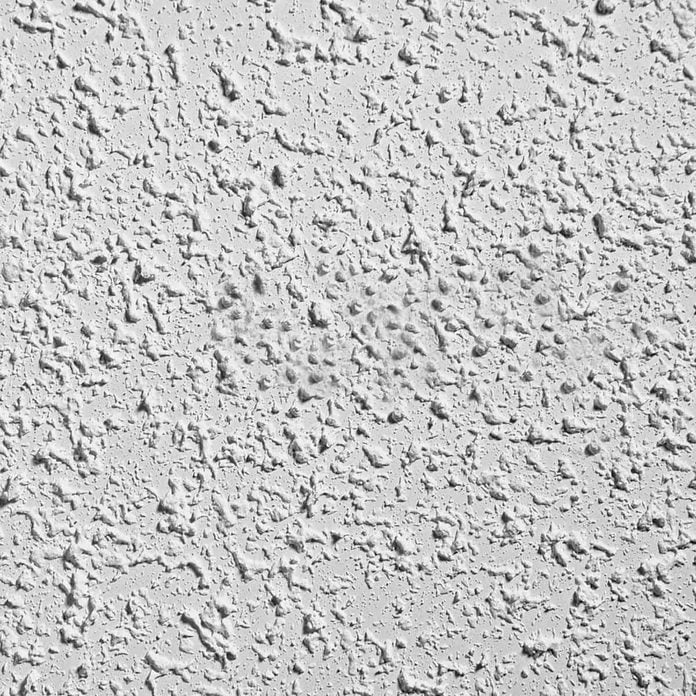
Popcorn Ceiling Texture
Probably the best-known drywall texture, “popcorn ceiling” gets its name from its slightly extruded, rounded knob-like texture. Its uneven distribution makes it particularly popular when there’s a need to cover up ceiling repairs. Plus, it has the benefit of slight sound dampening.
Popcorn ceilings have gone in and out of fashion several times over the last half century, and if the texture was applied prior to 1980, there is a chance that it contains asbestos. For that reason, it’s often best to simply cover over popcorn ceiling with a new layer of drywall instead of trying to remove it.
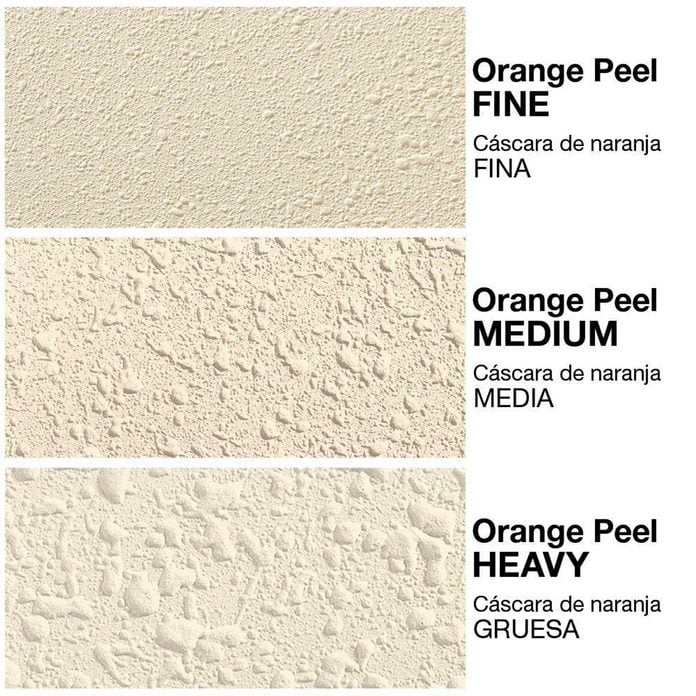
Orange Peel Drywall Texture
Just as you’d expect, orange peel texture has a cracked and subtly wrinkled surface, reminiscent of an orange. The surface has gentle curves, which distinguishes this texture from knockdown variations. Another popular choice in the last several decades, orange peel applicators are available at most home-improvement stores. Be sure you get the type that matches your needs, as the spray direction differs for ceiling or wall application.
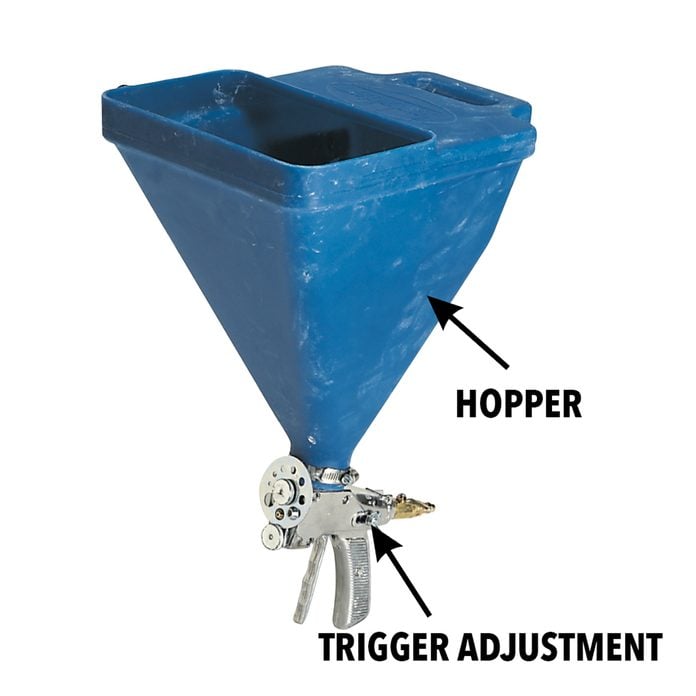
Spray Sand Ceiling Texture
The spray sand ceiling texture is exactly what it sounds like! Sand is mixed with primer, water, or very thin mud, and then sprayed onto the ceiling through a hopper gun. When done properly it gives a textured surface that doesn’t crack and separate like an orange peel texture. Often applied as a subtle accent, spray sand is primarily found on ceilings, but can be found on walls, as well.
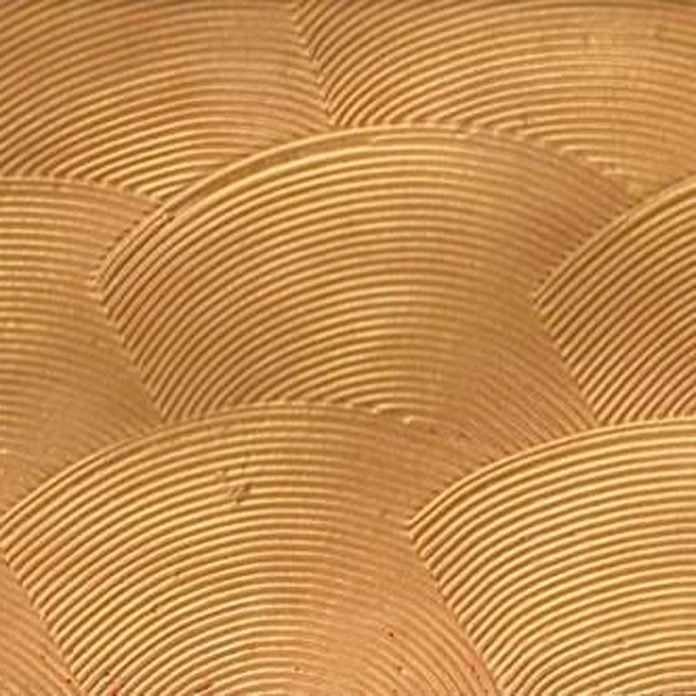
Comb Drywall Texture
A comb texture is applied with a toothed trowel, that creates a series of grooves in the wall or ceiling. Frequently laid on in half fans, the combing pattern has a planned appearance while still being relatively simple to replicate in the case of needed repairs. As with many of these drywall texture types, the application may be simple or intricate. In either case, it’s a great way to bring character to any room, or simply hide a hideous ceiling!
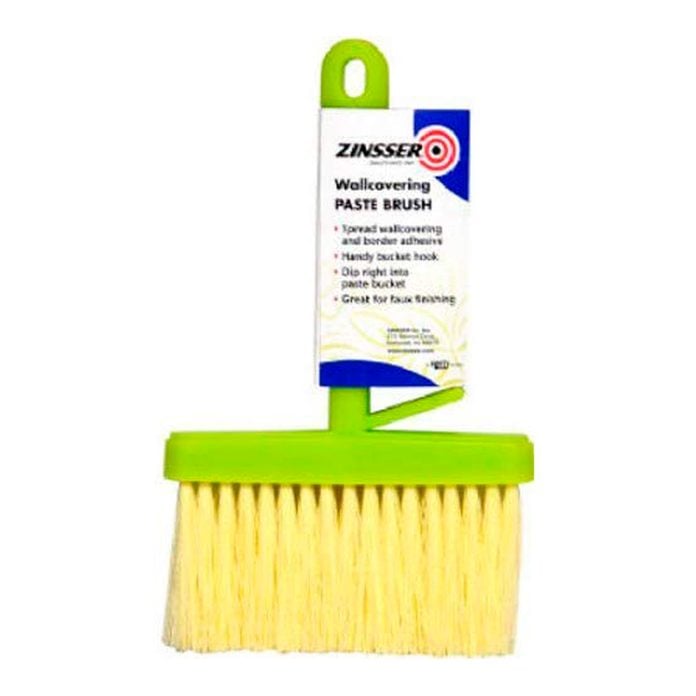
Sand Swirl Drywall Texture
A sand swirl finish is a combination of two other drywall texture types, namely the sand spray and comb techniques. The swirls are created by using a medium or thick bristled brush (think of a wallpaper brush, shown here, or the bristles on the back side of an ice scraper). The pattern can be orderly rows of half fans, or it can be more complex such as interlocking Cs or spirals. The swirls can be created in a pre-applied bed of mud, or the brush can be dipped into a bucket and the swirls laid down like paint.
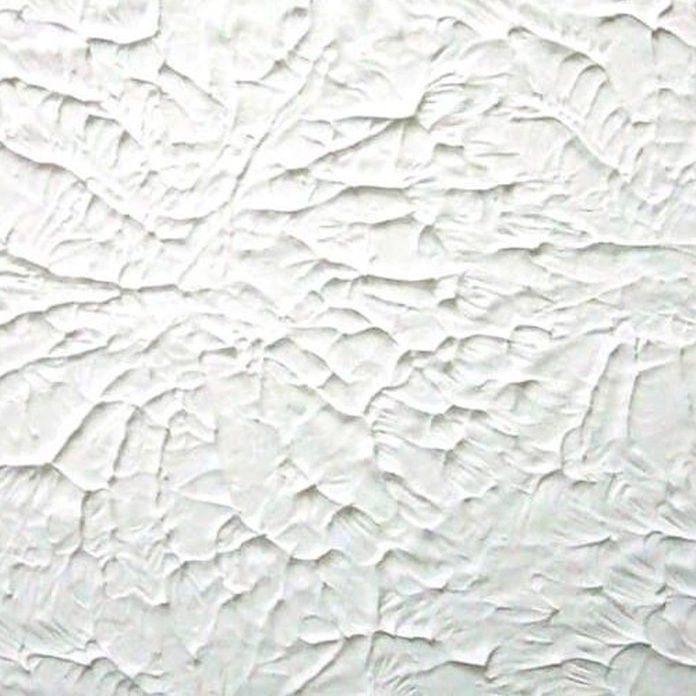
Stomp Brush Drywall Texture
An older technique that’s a lot of fun to apply, the stomp brush technique involves dunking a large brush in a bucket of drywall mud, pressing it against the ceiling, then sharply pulling it back down to create a distinctive, ridged texture. Also called “slap brush” texture, the application tends to be somewhat random, as the point is to create a replicable surface in case of repair. That said, it’s not too unusual to see orderly stomps placed across the ceiling in set distances.
It’s very rare to see stomped walls, as the ridges are jagged and can easily catch the clothing of passersby, and would quickly be knocked flat.
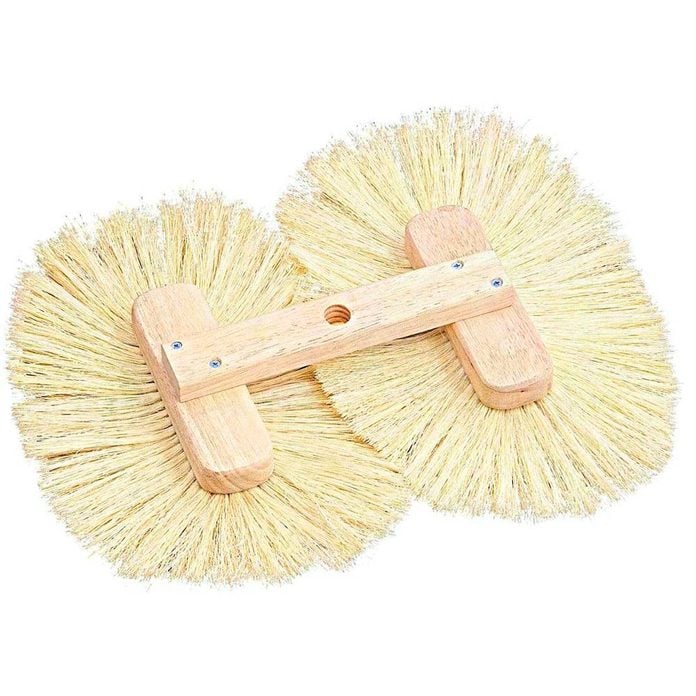
Crows Feet Drywall Texture
A crows foot texture is very similar to stomp brush. The difference—and where the technique gets its name —is in the brush itself. A crows foot is two oval stomp brushes mounted side-by-side. A good choice if you want a slightly more orderly ceiling texture, or if you want to texture a ceiling in half the number of stomps.
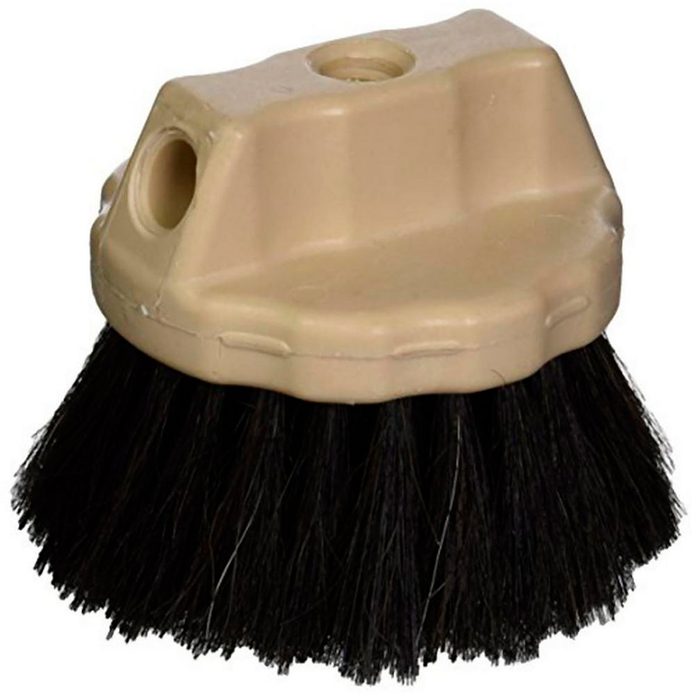
Rosebud Drywall Texture
The rosebud drywall texture type gets its name from the resemblance of a single, round stomp to a flower, with the center bud and petals radiating out. The rosebud drywall technique is essentially the brush stomp technique, but applied evenly, so that each stomp is clearly visible and doesn’t overlap the others to a significant degree.
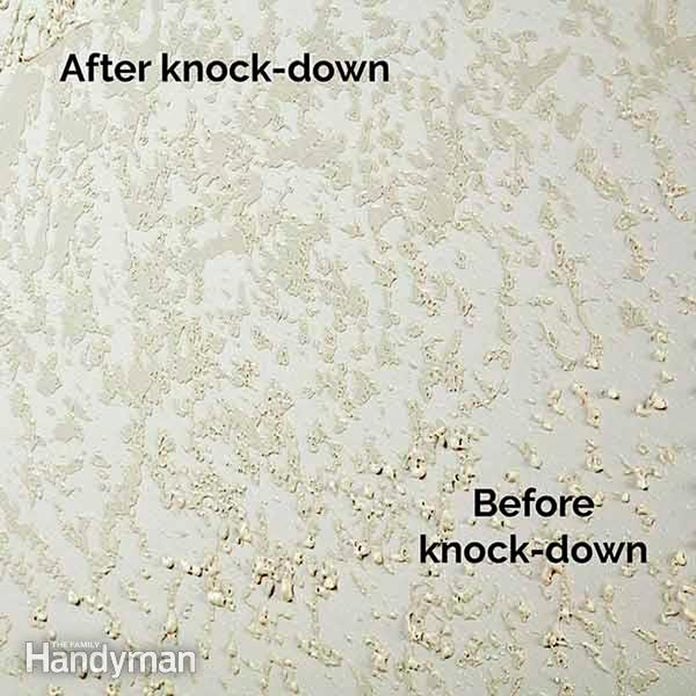
Knockdown Drywall Texture
Knockdown is a term that describes any texture which is applied and then “knocked down” by dragging a drywall knife over the surface, flattening its surface. This is why it is sometimes called a spray knockdown or stomp knockdown. The only difference is how the original texture was applied: by spray, stomping or some other technique.
A knockdown texture creates a subtle effect, with less shadowing on the textured surface. The actual knockdown can be done with any drywall knife, but specialty knockdown tools are available to help get the angle just right.
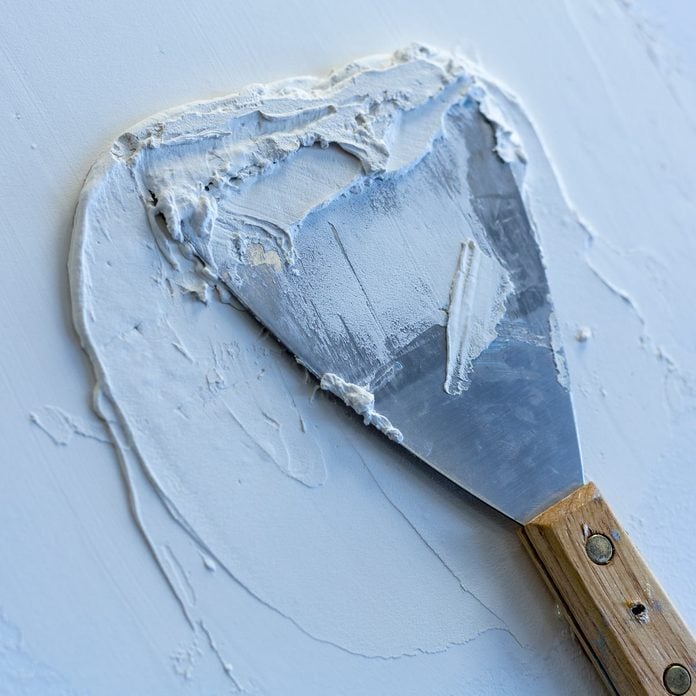
Skip-Trowel Ceiling Texture
Skip trowel technique adds a bit of artistic flair to a standard drywall texture. The installer lays down a film of drywall mud across the entire ceiling or wall, then goes back over the still-wet mud with a clean trowel held at a slight angle. This second pass pulls up pieces of the mud bed, creating a raised layer in random, rounded sections.
The depth of the texture will depend on how much mud is laid down in the first coat (the thicker the coat, the more material will be moved to form the top layer).
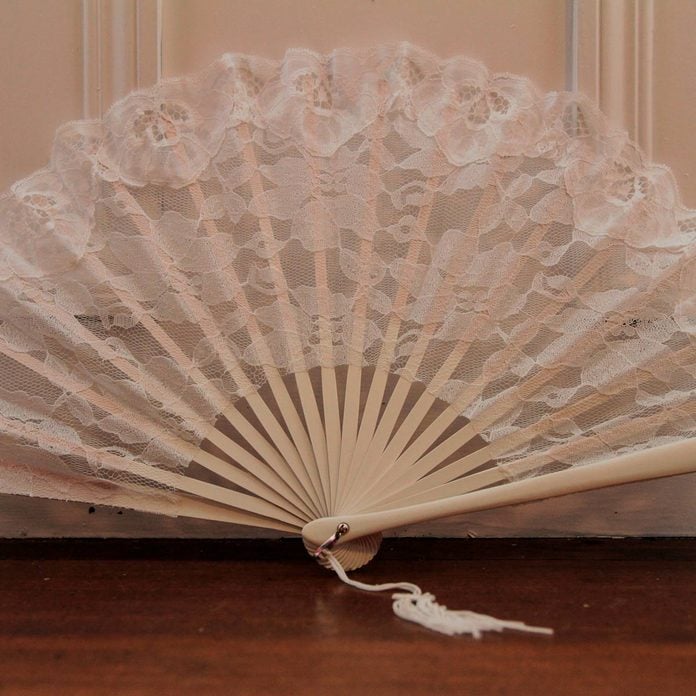
Lace Drywall Texture
A lace drywall texture is essentially a non-sand, spray knockdown. The end result is a multi-layered pattern that has a look reminiscent of old-fashioned lace. Often called Spanish Lace, this technique results in a texture similar to stucco surfaces, and is frequently seen in homes with stucco exteriors.
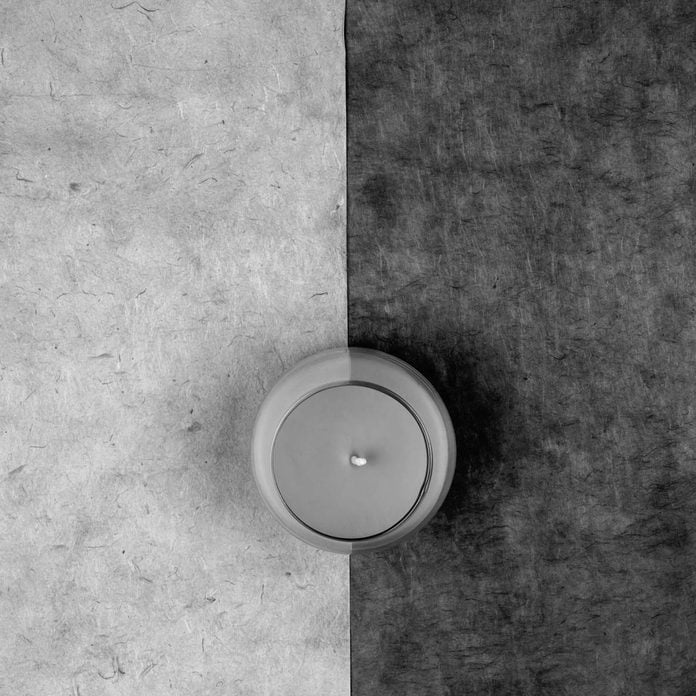
Multi-Colored Lace Drywall Texture
Applying lace drywall texture with two different colors creates a dramatic visual effect. First, a layer of drywall mud or paint is laid down on the ceiling or wall. If drywall mud is used, it should either be painted or mixed with a color (you can’t paint it after the next step).
Once that layer is dry, a second coat is put up, either with a spray or specialty thick-nap roller. This second coat should be a different color than the first coat. A quick pass with a knockdown knife, and the end result is two layers of texture, each with their own color.
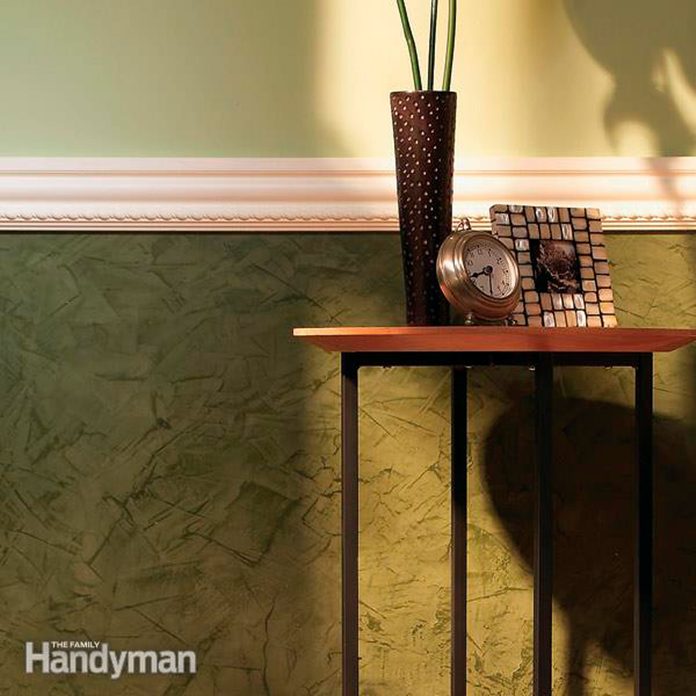
Venetian Drywall Finish
The Venetian drywall finish is based on a very old technique that employed plaster mixed with marble dust. It was applied in multiple thin layers, then sanded and buffed to give a polished look, full of depth.
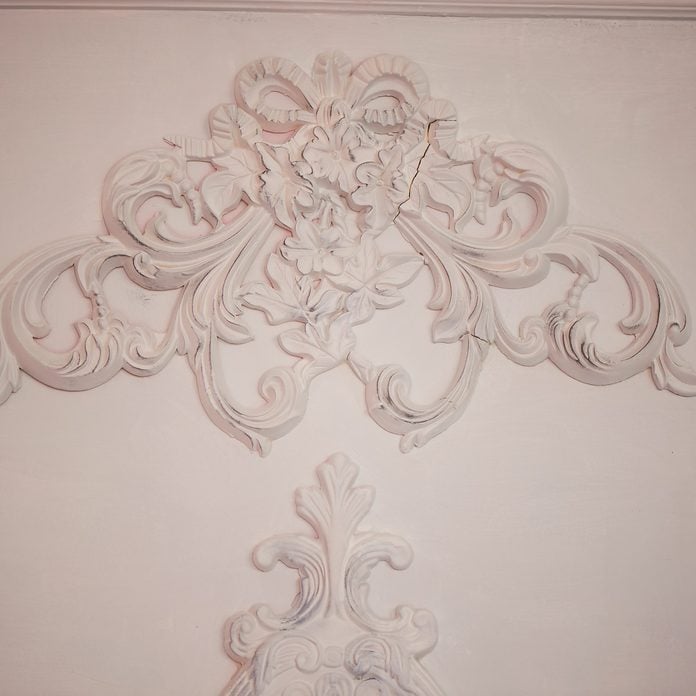
Bas-Relief Drywall Finish
Occasionally, drywall texture types surpass standard craft and enter the realm of art. A bas-relief is a sculpture that seems to emerge from the wall itself. Not commonly seen because of the possibility for damage and the level of craft required to pull it off, it is nonetheless one of the most fascinating drywall finishes still being used today.

Smooth Drywall Finish
We close with the classic, smooth drywall finish. It may seem simple, but in the hands of a master installer, a smooth finish can be a thing of beauty in and of itself. Often called a Level 5 finish, a truly smooth drywall finish involves laying a skim coat of drywall mud across the entire wall, resulting in a perfectly even and pristine surface. A perfectly smooth finish such as laid down by the horsehair plasterers of the days of old can actually obtain a near mirror finish, creating a dramatic presentation in a home or business.
Remember that the reason most drywall texture types are used is that they’re easier to install than making a surface smooth. So the next time you see a truly smooth drywall finish take a moment to appreciate the skill and artistry that went into its creation! Here’s what you need to know about different types of drywall and their uses.



















